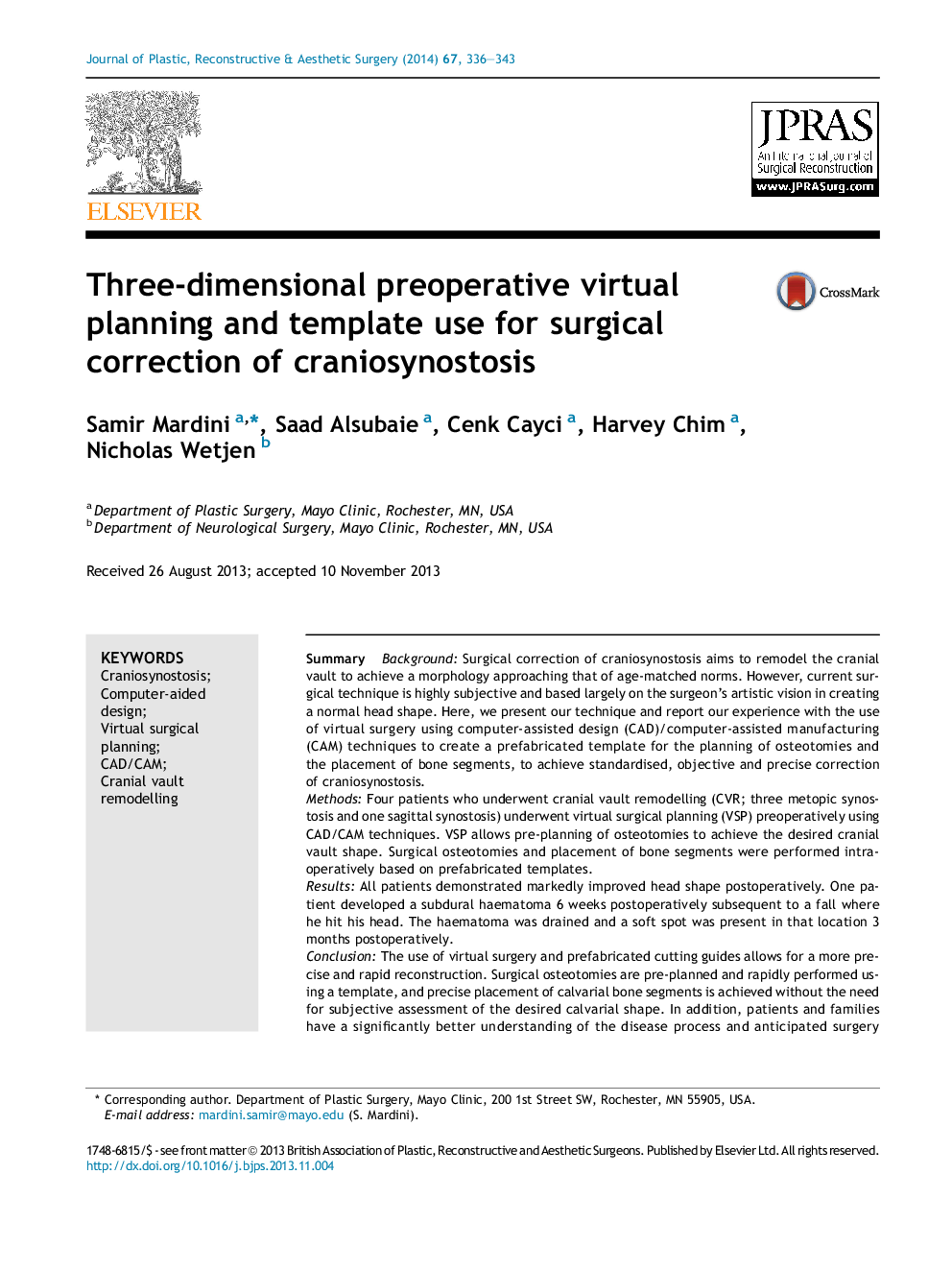| Article ID | Journal | Published Year | Pages | File Type |
|---|---|---|---|---|
| 4117999 | Journal of Plastic, Reconstructive & Aesthetic Surgery | 2014 | 8 Pages |
SummaryBackgroundSurgical correction of craniosynostosis aims to remodel the cranial vault to achieve a morphology approaching that of age-matched norms. However, current surgical technique is highly subjective and based largely on the surgeon's artistic vision in creating a normal head shape. Here, we present our technique and report our experience with the use of virtual surgery using computer-assisted design (CAD)/computer-assisted manufacturing (CAM) techniques to create a prefabricated template for the planning of osteotomies and the placement of bone segments, to achieve standardised, objective and precise correction of craniosynostosis.MethodsFour patients who underwent cranial vault remodelling (CVR; three metopic synostosis and one sagittal synostosis) underwent virtual surgical planning (VSP) preoperatively using CAD/CAM techniques. VSP allows pre-planning of osteotomies to achieve the desired cranial vault shape. Surgical osteotomies and placement of bone segments were performed intra-operatively based on prefabricated templates.ResultsAll patients demonstrated markedly improved head shape postoperatively. One patient developed a subdural haematoma 6 weeks postoperatively subsequent to a fall where he hit his head. The haematoma was drained and a soft spot was present in that location 3 months postoperatively.ConclusionThe use of virtual surgery and prefabricated cutting guides allows for a more precise and rapid reconstruction. Surgical osteotomies are pre-planned and rapidly performed using a template, and precise placement of calvarial bone segments is achieved without the need for subjective assessment of the desired calvarial shape. In addition, patients and families have a significantly better understanding of the disease process and anticipated surgery preoperatively with the visualisation achieved through virtual surgery. This results in better alignment of hopes and expectations between the parents and surgeons.
